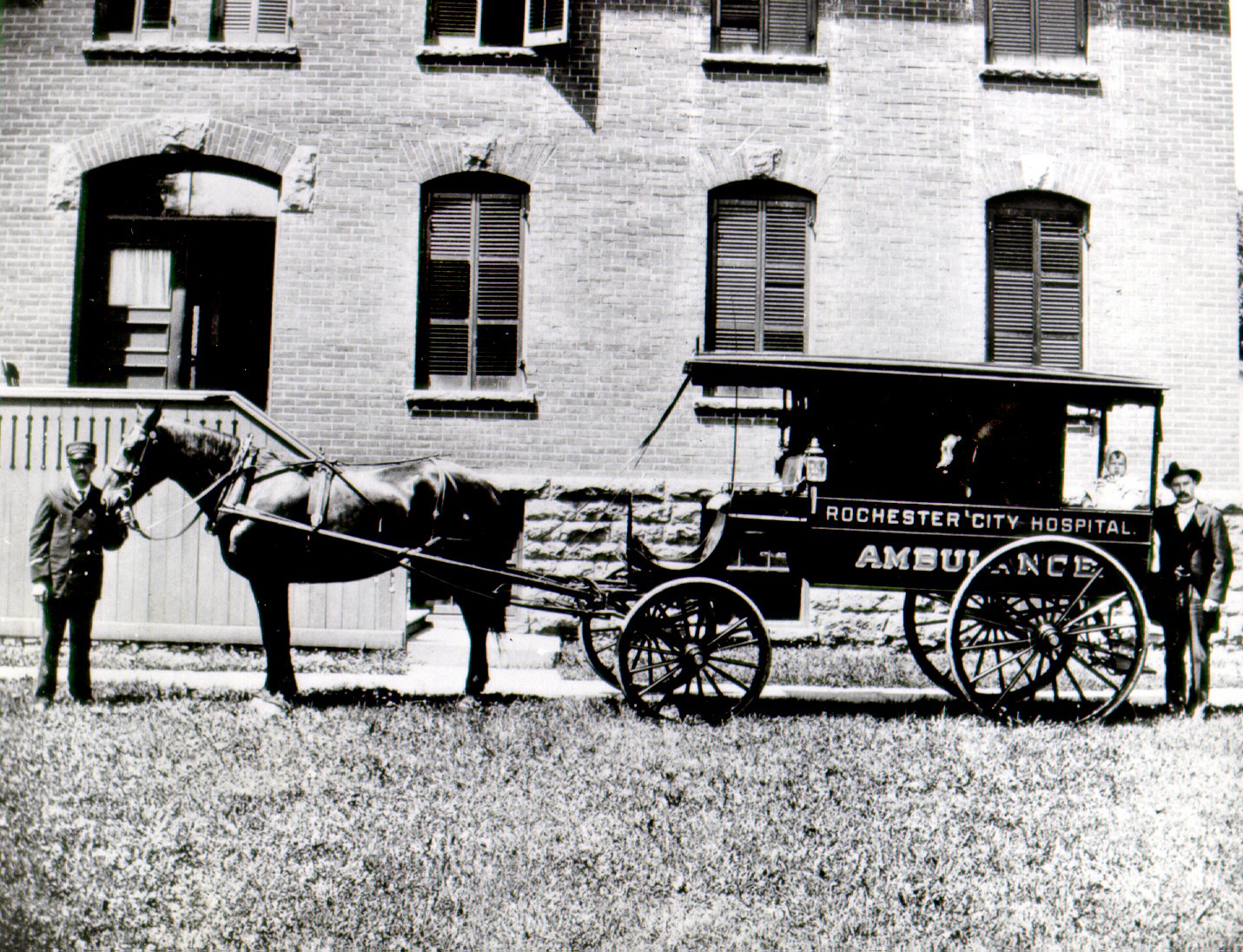Over 175 years of care for the communities we serve
Rochester Regional Health was built as an all-inclusive health care delivery system able to provide for and manage patients' health care needs over time, regardless of the setting.
This requires a full palate of services from traditional acute and institutional care, to new community-based services such as home health care, housing, transportation and more. Integration of our services improved convenience for our patients but and reflects our commitment to deliver high-quality and cost-effective care.
Explore our history and the collections of the Rochester Regional Health Archives below.
A 175+ Year
Legacy
While Rochester Regional Health was established in 2014, our hospitals have a history serving the community dating back to before the Civil War.
The Birthplace of the Registered Nurse
Rochester was the center of national nursing reform efforts. The title "Registered Nurse" (R.N.) was coined during an alumnae meeting at Rochester City Hospital (RGH), and subsequent legislation (The Armstrong Bill) was formulated and debated here.
Focused on Community Health
The foundation of Rochester Regional Health can be traced back to the work of the Rochester Female Charitable Society starting in the 1820s to care for the sick and poor, who then went on to establish the charter and raise funds for the establishment of Rochester City Hospital (RGH).
Milestones
2014
Rochester Regional Health System, the union of Rochester General Health System and Unity Health System, is launched. This partnership joined some of the country’s most talented providers – 14,000 physicians, nurses, caregivers and highly skilled professionals – in a mission to deliver community-focused, nationally recognized care that results in better health and the best patient experience.
2020
St. Lawrence Health System, including Canton-Potsdam Hospital, which includes a Level III Trauma Center; Gouverneur Hospital; and Massena Hospital, and Rochester Regional Health announce an affiliation to strengthen the care and services delivered in the North Country.

